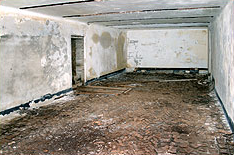Related Research Articles

Ultra was the designation adopted by British military intelligence in June 1941 for wartime signals intelligence obtained by breaking high-level encrypted enemy radio and teleprinter communications at the Government Code and Cypher School (GC&CS) at Bletchley Park. Ultra eventually became the standard designation among the western Allies for all such intelligence. The name arose because the intelligence obtained was considered more important than that designated by the highest British security classification then used and so was regarded as being Ultra Secret. Several other cryptonyms had been used for such intelligence.

MI5, officially the Security Service, is the United Kingdom's domestic counter-intelligence and security agency and is part of its intelligence machinery alongside the Secret Intelligence Service (MI6), Government Communications Headquarters (GCHQ), and Defence Intelligence (DI). MI5 is directed by the Joint Intelligence Committee (JIC), and the service is bound by the Security Service Act 1989. The service is directed to protect British parliamentary democracy and economic interests and to counter terrorism and espionage within the United Kingdom (UK). Within the civil service community, the service is colloquially known as Box, or Box 500, after its official wartime address of PO Box 500; its current address is PO Box 3255, London SW1P 1AE.

Counterintelligence (counter-intelligence) or counterespionage (counter-espionage) is any activity aimed at protecting an agency's intelligence program from an opposition's intelligence service. It includes gathering information and conducting activities to prevent espionage, sabotage, assassinations or other intelligence activities conducted by, for, or on behalf of foreign powers, organizations or persons.

Operation Bodyguard was the code name for a World War II deception strategy employed by the Allied states before the 1944 invasion of northwest Europe. Bodyguard set out an overall stratagem for misleading the Oberkommando der Wehrmacht as to the time and place of the invasion. Planning for Bodyguard was started in 1943 by the London Controlling Section, a department of the war cabinet. They produced a draft strategy, referred to as Plan Jael, which was presented to leaders at the Tehran Conference in late November and, despite scepticism due to the failure of earlier deception strategy, approved on 6 December 1943.

Classified information is material that a government body deems to be sensitive information that must be protected. Access is restricted by law or regulation to particular groups of people with the necessary security clearance with a need to know. Mishandling of the material can incur criminal penalties.
A security clearance is a status granted to individuals allowing them access to classified information or to restricted areas, after completion of a thorough background check. The term "security clearance" is also sometimes used in private organizations that have a formal process to vet employees for access to sensitive information. A clearance by itself is normally not sufficient to gain access; the organization must also determine that the cleared individual needs to know specific information. No individual is supposed to be granted automatic access to classified information solely because of rank, position, or a security clearance.
A code name, codename, call sign, or cryptonym is a code word or name used, sometimes clandestinely, to refer to another name, word, project, or person. Code names are often used for military purposes, or in espionage. They may also be used in industrial counter-espionage to protect secret projects and the like from business rivals, or to give names to projects whose marketing name has not yet been determined. Another reason for the use of names and phrases in the military is that they transmit with a lower level of cumulative errors over a walkie-talkie or radio link than actual names.

Allied Force Headquarters (AFHQ) was the headquarters that controlled all Allied operational forces in the Mediterranean theatre of World War II from August 1942 until the end of the war in Europe in May 1945.

Elyesa Bazna, sometimes known as Ilyaz and Iliaz Bazna, was a secret agent for Nazi Germany during World War II, operating under the code name Cicero.

Sensitive compartmented information (SCI) is a type of United States classified information concerning or derived from sensitive intelligence sources, methods, or analytical processes. All SCI must be handled within formal access control systems established by the Director of National Intelligence.
Operation Mincemeat was a successful British deception operation of the Second World War to disguise the 1943 Allied invasion of Sicily. Two members of British intelligence obtained the body of Glyndwr Michael, a tramp who died from eating rat poison, dressed him as an officer of the Royal Marines and placed personal items on him identifying him as the fictitious Captain William Martin. Correspondence between two British generals that suggested that the Allies planned to invade Greece and Sardinia, with Sicily as merely the target of a feint, was also placed on the body.

Operation Copperhead was a small military deception operation run by the British during the Second World War. It formed part of Operation Bodyguard, the cover plan for the invasion of Normandy in 1944 and was intended to mislead German intelligence as to the location of General Bernard Montgomery. The operation was conceived by Dudley Clarke in early 1944 after he watched the film Five Graves to Cairo. Following the war M. E. Clifton James wrote a book about the operation, I Was Monty's Double. It was later adapted into a film, with James in the lead role.

USS Ancon (AGC-4) was one of three identical ships built for the Panama Railroad Company put into operation in 1938. The ship was converted to a troop ship by the Army in January 1942, making several voyages to Australia with troops as an Army Transport. In August 1942 the ship's operation was transferred to the United States Navy for the duration of World War II and converted to a combined headquarters and communications command ship.
Special access programs (SAPs) in the U.S. Federal Government are security protocols that provide highly classified information with safeguards and access restrictions that exceed those for regular (collateral) classified information. SAPs can range from black projects to routine but especially-sensitive operations, such as COMSEC maintenance or presidential transportation support. In addition to collateral controls, a SAP may impose more stringent investigative or adjudicative requirements, specialized nondisclosure agreements, special terminology or markings, exclusion from standard contract investigations (carve-outs), and centralized billet systems. Within the Department of Defense, SAP is better known as "SAR" by the mandatory Special Access Required (SAR) markings.

The military history of Gibraltar during World War II exemplifies Gibraltar's position as a British fortress from the early-18th century onwards and as a vital factor in British military strategy, both as a foothold on the continent of Europe, and as a bastion of British sea power. During World War II, Gibraltar served a vital role in both the Atlantic Theatre and the Mediterranean Theatre, controlling virtually all naval traffic moving between the Mediterranean Sea and the Atlantic Ocean.
National intelligence programs, and, by extension, the overall defenses of nations, are vulnerable to attack. It is the role of intelligence cycle security to protect the process embodied in the intelligence cycle, and that which it defends. A number of disciplines go into protecting the intelligence cycle. One of the challenges is there are a wide range of potential threats, so threat assessment, if complete, is a complex task. Governments try to protect three things:
GHQ Liaison Regiment was a special reconnaissance unit of the British Army first formed in 1939 during the early stages of World War II. The regiment's headquarters were at The Richmond Hill Hotel in Richmond, Surrey ; its base was at Pembroke Lodge, a Georgian house in Richmond Park, London.

The Abwehr was the German military-intelligence service for the Reichswehr and the Wehrmacht from 1920 to 1944. Although the 1919 Treaty of Versailles prohibited the Weimar Republic from establishing an intelligence organization of their own, they formed an espionage group in 1920 within the Ministry of Defence, calling it the Abwehr. The initial purpose of the Abwehr was defense against foreign espionage: an organizational role that later evolved considerably. Under General Kurt von Schleicher the individual military services' intelligence units were combined and, in 1929, centralized under Schleicher's Ministeramt within the Ministry of Defence, forming the foundation for the more commonly understood manifestation of the Abwehr.

Operation Tracer was a secret Second World War Royal Navy military operation in Gibraltar, a British Overseas Territory and military base. The impetus for the stay-behind plan was the 1940 scheme by Germany to capture Gibraltar, code-named Operation Felix. Operation Tracer was the brainchild of Rear Admiral John Henry Godfrey, the Director of the Naval Intelligence Division of the Admiralty.
In 1944, codenames related to the D-Day plans appeared as solutions in crosswords in the British newspaper, The Daily Telegraph, which the British Secret Services initially suspected to be a form of espionage.
References
- ↑ Green, Jonathon (1987). Dictionary of Jargon. Routledge. p. 55. ISBN 0-7100-9919-3.
- ↑ Polmar, Norman; Thomas B. Allen (1998). Spy Book: The Encyclopedia of Espionage. Random House. p. 66. ISBN 0-375-70249-0.
- 1 2 Allen, Thomas B. (June 2002). "Untold Stories of D-Day". National Geographic . Archived from the original on December 10, 2007.
- ↑ Melton, H. Keith; Wallace, Robert; Schlesinger, Henry Robert (2011). Spycraft. Random House. ISBN 978-1-4464-9776-0.
- ↑ Fitzgerald, Tony. "BIGOT security classification stamp". A History of the World. BBC/The British Museum.
- ↑ Fitzgerald, Tony (25 August 2011). "Obituary: Ronald Fitzgerald". The Guardian. Retrieved 4 December 2011.
- ↑ "Bigot - Husky most secret : [map]". Imperial War Museum .
- ↑ Elsey, George (2005). An Unplanned Life . University of Missouri Press. p. 52. ISBN 0-8262-1622-6 . Retrieved 9 December 2011.
- ↑ Watson, Bruce; Watson, Susan M.; Hopple, Gerald W. (1990). United States intelligence: an encyclopedia. Garland. ISBN 0-8240-3713-8.
- Major, Ben; Montbertrand, Lois; Forward Gawne, Jonathan (2011)."Unit Serial Numbers from the 'First U.S. Army Build-Up Priority Tables, List A (D+1 through D+14)', D-Day (Normandy), Top Secret--BIGOT NEPTUNE", lulu.com, ISBN 978-1-4476-7681-2